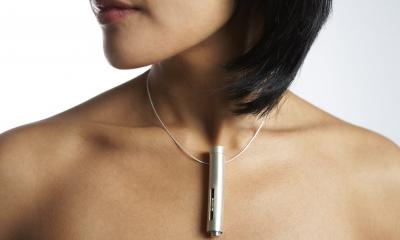Non-/minimal invasive glucose monitoring
Self-monitoring with a capillary blood glucose meter has long been the only way to monitor a patient’s blood glucose and to adapt their insulin administration. The frequent needle pricks are a crucial, but unpleasant part of the daily diabetes routine. However, that is changing.
While devices for continuous glucose monitoring (CGMs) cut down on blood tests, patients still have to prick a small needle under their skin. Modern sensors inserted under the skin of the belly or arm (eversense from Senseonics), however, measure the blood sugar every few minutes. They wirelessly send the results to a pump, smartphone, or another device. Such devices have become more accurate, and the operating time has increased to a range from 15 days to 6 months.
Microneedles are a less invasive method to measure blood glucose levels. For example, researchers at the University of Tokyo have arranged the microneedles on a paper sensor and adhesive patch. When placed upon the skin, the biofluid is extracted via capillary force and transported to the sensor to detect.
Non-invasive connected sensors measuring glucose include skin-patches (Abbott’s FreeStyle Libre; sugarBEAT CGM from Nemaura Medical), nanotechnology-based gas sensors (AerBetic Inc) or radio wave technology (Sense Glucose Earring).
In 2020, researchers at Pohang University of Science & Technology presented a wirelessly driven ‘smart contact lens’ technology that could detect diabetes and further treat diabetic retinopathy just by wearing the lens. It is made of biocompatible polymers and comes with integrated biosensors as well as drug delivery and data communication systems.

